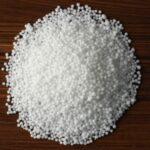The global ammonium nitrate market size is expected to grow at a CAGR of 3.8% during the period 2023-2028. This remarkable growth is a testament to the versatility and importance of ammonium nitrate (AN) in various industrial sectors. AN, with its chemical formula NH4NO3, has a long and storied history as a critical component in several industrial processes. From explosives and mining to agriculture, construction, and chemical manufacturing, AN plays a pivotal role in shaping our modern world.
In this comprehensive exploration, we will delve into the multifaceted industrial applications of ammonium nitrate. We’ll uncover its historical significance, examine its diverse uses in various industries, explore safety and regulatory considerations, delve into environmental impact concerns, and glimpse into the future trends and innovations that will continue to shape the AN market.
Understanding Ammonium Nitrate
Before we dive into its industrial applications, let’s start with a foundational understanding of ammonium nitrate.
Definition and Chemical Composition
Ammonium nitrate is a chemical compound made up of two key components: ammonium ions (NH4+) and nitrate ions (NO3-). This unique combination of nitrogen and oxygen makes it an essential source of nitrogen in various applications.
Properties and Characteristics
AN is a white crystalline solid that is highly soluble in water. Its solubility, high nitrogen content (about 34-35%), and ability to release nitrogen slowly over time are some of its notable properties. These properties make it suitable for a wide range of industrial uses.
Historical Perspective
The historical use of ammonium nitrate in industrial applications dates back to the early 20th century. Initially, its primary use was in explosives, but over time, its applications diversified.
Historical Use of AN in Industrial Applications
Ammonium nitrate gained prominence during World War I when it was used as a component in explosives. Its stability and ease of handling made it a preferred choice for military applications.
Key Developments in AN Usage Over Time
As industrial processes evolved, so did the applications of ammonium nitrate. The post-war era saw a shift towards its use in agriculture, with AN becoming a vital nitrogen fertilizer. This shift marked the beginning of its journey into various industrial sectors.
Industrial Applications of Ammonium Nitrate
Explosives and Mining
One of the most well-known applications of ammonium nitrate is in the production of explosives. AN-based explosives are used extensively in mining, construction, and military applications.
Role of AN in Explosive Manufacturing
AN serves as an oxygen-rich oxidizer in explosives, providing the necessary oxygen for combustion. This role is critical in the controlled release of energy during detonation.
AN-Based Explosives and Their Applications
AN-based explosives find use in mining operations, quarrying, and controlled demolition. They offer a safer and more predictable alternative to older explosive compounds.
Safety Considerations in Mining and Explosives Industries
Despite its effectiveness, AN-based explosives come with safety concerns. We’ll explore safety protocols and measures in place to mitigate risks in these industries.
Agriculture
The use of ammonium nitrate in agriculture has revolutionized modern farming practices.
AN as a Nitrogen Fertilizer
AN is a prominent source of nitrogen in agriculture. Its high nitrogen content and solubility make it an excellent choice for crop nutrition.
Benefits of AN in Agriculture
We’ll discuss the advantages of using AN in farming, including its impact on crop yield and quality.
Environmental Impact and Sustainability Considerations
While AN enhances crop productivity, its environmental impact, such as nitrate leaching, raises sustainability questions. We’ll explore ways to address these concerns.
Construction and Civil Engineering
AN plays a vital role in construction and civil engineering, particularly in controlled blasting and concrete stabilization.
AN in Construction Industry Applications
We’ll delve into how AN is used in construction, from controlled demolition to excavation.
Use in Controlled Blasting and Excavation
The controlled release of energy in AN-based explosives is instrumental in various construction activities.
AN’s Role in Stabilizing and Strengthening Concrete
AN is sometimes added to concrete mixes to improve its strength and durability. We’ll explore this application in detail.
Chemical Manufacturing
Ammonium nitrate is not only an end product but also a crucial precursor in chemical synthesis.
AN as a Precursor in Chemical Synthesis
Many industries rely on AN as a starting material for the production of various chemicals.
Industries That Rely on AN as a Raw Material
We’ll highlight sectors such as pharmaceuticals and specialty chemicals that depend on AN.
Safety Protocols in Chemical Manufacturing Involving AN
Safety measures are paramount in chemical manufacturing. We’ll discuss the protocols and guidelines in place.
Safety and Regulatory Considerations
The use of ammonium nitrate in various industries necessitates strict safety and regulatory standards.
Overview of Safety Measures in AN Handling and Storage
Handling AN requires adherence to safety protocols to prevent accidents.
Regulatory Guidelines and Standards Related to AN Use
We’ll outline the regulatory landscape governing AN use and transportation to ensure public safety.
Environmental Impact
The environmental impact of AN usage is a topic of concern, particularly in agriculture.
Environmental Concerns Associated with AN Usage
We’ll explore issues like nitrate pollution and their consequences on ecosystems and water sources.
Mitigation Strategies and Sustainable Practices
Efforts are underway to mitigate the environmental impact of AN use. We’ll discuss sustainable farming practices and technological advancements.
Future Trends and Innovations
The AN market is continually evolving, with emerging applications and innovations on the horizon.
Emerging Applications and Innovations in AN Technology
We’ll look at how AN is finding new applications and evolving to meet the needs of different industries.
Potential Advancements in Safety and Environmental Impact Reduction
Innovation is also driving improvements in safety and environmental considerations.
Case Studies
To illustrate the practical significance of AN in various industries, we’ll explore real-world case studies.



